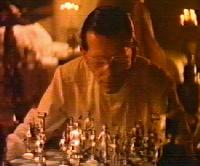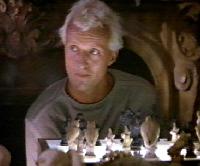The Blade Runner FAQ
Themes and subtexts in Blade Runner
| What is BR? |
| News & Views |
| The FAQ |
| Encyclopedia |
| Quotes |
| People |
| Locations |
| Scripts |
| Analysis |
| Fan-tastic |
| BR Fun |
| BR Game |
| BR Magazine |
| BR Comic |
| Downloads |
| Collectibles |
| Related |
| Links |
| Site Info |
| Search Site |
BRmovie.com is the Home of Blade Runner - the current Blade Runner FAQ, news, resources, links, quotes, scripts and everything else Blade Runner.

![]()
Blade Runner
Buy this Mini Poster at AllPosters.com
|
Any
Comments? Please e-mail the Webmaster |
| Want the DVD? Or the BR Game? Don't know which books or music to get? Maybe you'd like a Deckard action figure? Make sure you check the BR Related section for all your BR choices. |
Eye theme
A sense of seeing, and of being seen, of being watched. Hinting at, or creating, a sense of paranoia and "Big Brother is watching you"? Religious theme
Animal theme:Each character is associated with an animal: Leon = Turtle Chess theme:The chess game between Tyrell and Sebastian is the conclusion of an informal game played between Adolf Anderssen and Lionel Kieseritzky, in London at Simpson's on the Strand in 1851. They were both maths teachers and well-known, successful chess players. However Kieseritzky (the loser) died a pauper just two years later. In 1855 Ernst Falkbeer came up with the name the "Immortal Game" and it has become one of the most famous chess games ever played. It has even been used occasionally for La Partita - a chess game recreated with real people every year in Marostica, Italy. It starts off with King's Gambit, which Kieseritzky accepts. Anderssen follows with the King's Bishop Gambit. Kieseritzky, playing Black, doesn't develop most of his pieces relying on the Queen's power to achieve his goals. After Black's first challenges are rebuffed, he sweeps forward with false confidence. White loses his Bishop early (it gets fried in an electrical field) and has his two Rooks shot, but this doesn't affect his goal. At the end, his Queen dies, but he is still victorious. White may have lost his most valuable pieces, but it is the Black King who ends up with his eyes crushed into his skull. Note, the chessboards in Blade Runner are not arranged exactly as they should be for the position in The Immortal Game and Sebastian's and Tyrell's boards are not set up the same as each other.
There are two different transcriptions documented in chess books and some other incorrect variations presented on the Web. The main variation is in the order of moves 18-20. (White is ignoring the threats to his Rooks so it doesn't really matter in the end which order the Rooks get taken - White is already setting up the kill.). The position after 20 is the same in both versions. It has been suggested by some that Kieseritzky might have resigned in move 20. With no way to continue attacking the White King, he has to defend his static back row, but it is in fact already too late as he has nowhere to run. The subsequent moves (21-23) are the ones that are relevant to Blade Runner. So here is the correct transcription of The Immortal Game and main variation, presented in Figurine Algebraic Notation. 1.e4 e5 2.f4 exf4 3.Bc4 Qh4+ 4.Kf1 b5 5.Bxb5 Nf6 6.Nf3 Qh6 7.d3 Nh5 8.Nh4 Qg5 9.Nf5 c6 10.g4 Nf6 11.Rg1 cxb5 12.h4 Qg6 13.h5 Qg5 14.Qf3 Ng8 15.Bxf4 Qf6 16.Nc3 Bc5 17.Nd5 Qxb2 18.Bd6 Bxg1 19.e5 Qxa1+ 20.Ke2 Na6 21.Nxg7+ Kd8 22.Qf6+ Nxf6 23.Be7++ (To play through this game visually, try this site.) The chess boards in the film are not arranged exactly as they would in be the Immortal Game, and Sebastian's board does not match Tyrell's.
This is what happens in the movie: On a simple level, the game can be seen as just the fight of replicants against humans. However, The Immortal Game is also a clear reflection of the struggle for longer life that Roy and his fellow replicants seek. They want to escape from their status as pawns and find immortality (as a pawn becoming a queen on the eighth rank). Yet another layer can be seen at the individual level with Roy chasing King Tyrell. In the game, Roy checkmates Tyrell. In life, Roy sets up Tyrell - Tyrell gets some false confidence just before the end, but just as in the game, the King eventually dies.
|

 Roy
Batty is a Christ-like figure, but has also elements of Lucifer,
the Fallen Angel, who rebels against God, and is cast out of Heaven
because of it; again, a flawed analogy: he does not sacrifice
himself, and even rebels - and finally destroys - his god, his
"father".
Roy
Batty is a Christ-like figure, but has also elements of Lucifer,
the Fallen Angel, who rebels against God, and is cast out of Heaven
because of it; again, a flawed analogy: he does not sacrifice
himself, and even rebels - and finally destroys - his god, his
"father".

